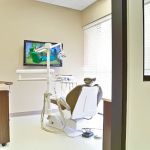How Often Should You Replace Your Toothbrush for Better Oral Health?
- Why You Should Replace Your Toothbrush Regularly
- Signs It's Time to Replace Your Toothbrush
- Proper Toothbrush Care for Longevity
- Choosing the Right Toothbrush for Optimal Oral Health
Why You Should Replace Your Toothbrush Regularly
When it comes to maintaining good oral health, replacing your toothbrush is one of the simplest yet most effective habits to adopt. The American Dental Association recommends replacing your toothbrush every three to four months. This routine ensures that your toothbrush remains effective in removing plaque and bacteria from your teeth and gums, ultimately reducing the risk of cavities, gum disease, and bad breath.
Old, worn-out bristles lose their cleaning ability and can actually harm your gums, causing irritation or bleeding. Additionally, bacteria can accumulate on a toothbrush that's been used for too long, further compromising your oral hygiene.
Signs It's Time to Replace Your Toothbrush
While a general rule of thumb is to replace your toothbrush every 3-4 months, there are other signs that can indicate it’s time for a new one:
- Frayed bristles: If you notice that the bristles of your toothbrush are splayed or frayed, it’s time to replace it. Worn-out bristles are less effective in cleaning your teeth properly.
- Recent illness: If you've had a cold or flu, it's a good idea to replace your toothbrush to avoid reintroducing harmful germs into your mouth.
- Discoloration: A toothbrush that has changed color or shows signs of staining may be harboring bacteria or mold, which can affect your oral health.
Proper Toothbrush Care for Longevity
To maximize the lifespan of your toothbrush and keep your teeth cleaner for longer, proper toothbrush care is essential. After each use, rinse your toothbrush thoroughly to remove any toothpaste and debris. Store it in an upright position in a well-ventilated area to allow it to dry out completely. Avoid covering your toothbrush with a cap, as this can cause bacteria to grow more easily.
In addition to regular replacements, consider using an electric toothbrush. Electric toothbrushes are often more efficient in removing plaque, and some models come with features like pressure sensors and timers to ensure optimal brushing technique.
Choosing the Right Toothbrush for Optimal Oral Health
Choosing the right toothbrush is just as important as knowing when to replace it. Whether you prefer a manual or electric toothbrush, make sure it suits your oral health needs. If you have sensitive gums or teeth, opt for a toothbrush with soft bristles. A toothbrush with medium or hard bristles may be too abrasive and could cause gum recession or enamel damage.
Additionally, consider the size of the toothbrush head. A smaller head can help you reach all areas of your mouth, especially the back teeth, while a larger head may be less effective in cleaning these hard-to-reach spots.
Maintaining your toothbrush and knowing when to replace it plays a crucial role in achieving optimal oral health. If you're unsure whether it's time for a new toothbrush or if you want to explore the best options for your dental care, visit Dentistry Toothtruth to find more helpful tips and the right products for your needs.







 Brident Dental & Orthodontics3.0 (509 review)
Brident Dental & Orthodontics3.0 (509 review) Swauger & Suiter Pediatric Dentistry4.0 (1010 review)
Swauger & Suiter Pediatric Dentistry4.0 (1010 review) University Dental Group4.0 (541 review)
University Dental Group4.0 (541 review) Pura Dental Center Kingsbridge4.0 (498 review)
Pura Dental Center Kingsbridge4.0 (498 review) Dr. Denise M. Henderson, DDS5.0 (221 review)
Dr. Denise M. Henderson, DDS5.0 (221 review) Access Dental Group Manhattan PLLC3.0 (18 review)
Access Dental Group Manhattan PLLC3.0 (18 review) The Importance of Oral Health Education During Pregnancy for a Healthy Pregnancy
The Importance of Oral Health Education During Pregnancy for a Healthy Pregnancy Best Tips for Brushing Your Teeth Properly for Healthy Gums: Essential Techniques for Oral Health
Best Tips for Brushing Your Teeth Properly for Healthy Gums: Essential Techniques for Oral Health Why Skipping Dental Checkups Can Lead to Bigger Oral Health Problems
Why Skipping Dental Checkups Can Lead to Bigger Oral Health Problems Advantages of Porcelain Dental Restorations
Advantages of Porcelain Dental Restorations How Can Diabetes Cause Tooth and Gum Problems? Preventing and Managing Oral Health Issues
How Can Diabetes Cause Tooth and Gum Problems? Preventing and Managing Oral Health Issues Healthy Habits for Promoting Good Oral Health and Hygiene: Tips for a Healthy Smile
Healthy Habits for Promoting Good Oral Health and Hygiene: Tips for a Healthy Smile